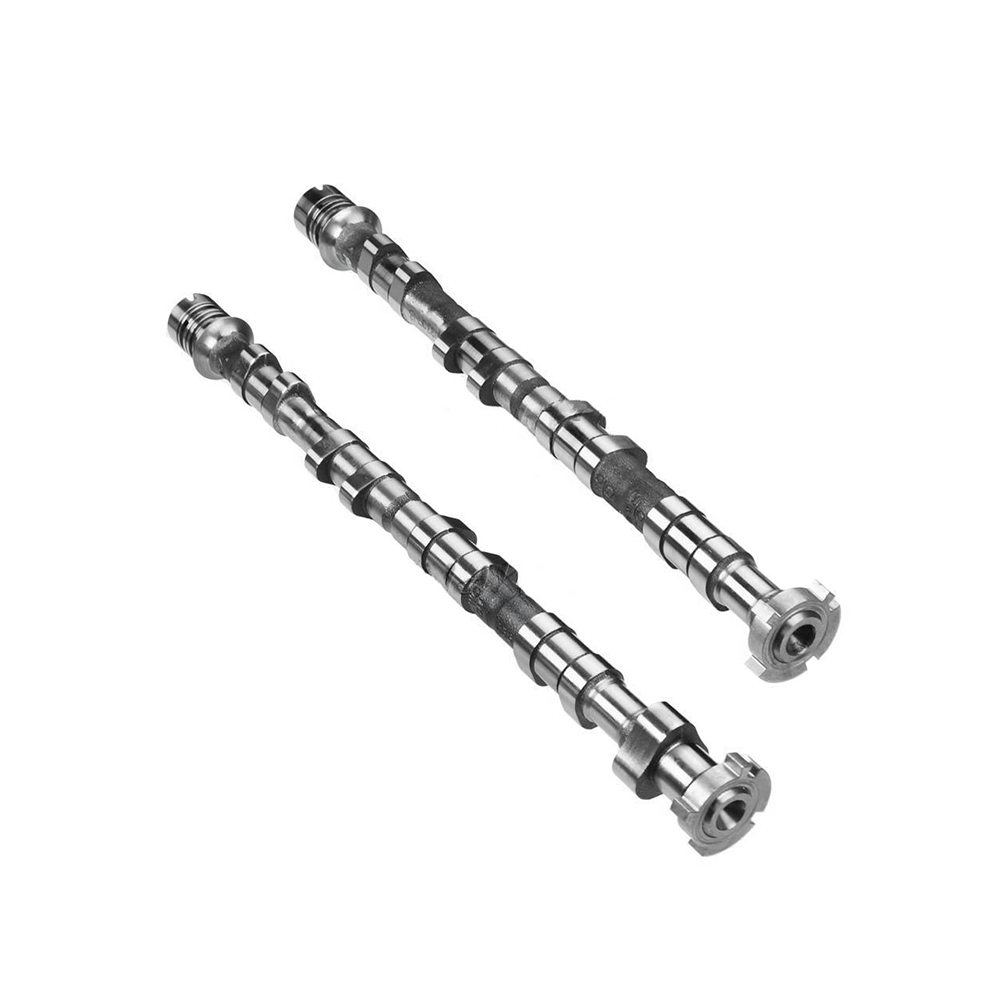Durations are measured at 1mm lash Lift:
Stock cams
203.6 int duration .406" int lift
194.0 exh duration .406" exh lift
ZZP Stage 2
224 int duration .438" int lift
218 exh duration .420" exh lift
These are our ZZP Stage 2 performance cams for your LNF powered vehicle. They are the same profile that was used in our 10 second ZFR powered Cobalt. They were also used to produce more than 700whp with a 62mm turbo on the same car.
These cams require taller lash adjusters which are included in this cam kit.
All ZZP stage 2 LNF cams come standard with our .050" larger fuel pump lobe.
Head check note: There are a lot of LDK engines out there, please make sure that you are ordering the correct cams, these will not work if you have an LDK head, if you have an LDK head, then you will need the "LHU" version instead because the exhaust cam is longer.
The installation of cams in an overhead cam motor requires a knowledgeable mechanic to do it properly. Failure to have the timing chain and gears setup correctly will result in poor performance or severe engine damage. A P0014 code is generally from one of the cams being a tooth off. A P0017 code is an intermittent code that is from the cam phaser not properly changing the cam timing. If the code comes up once, clear it, if it comes back, then you may have a phaser problem. The stock camshaft bolts are TTY and should be replaced when installing cams, we have upgraded re-usable bolts found here. You will NEED to replace your valve springs and retainers. It is also recommended to remove or replace your balance shafts with the neutral balance shafts, and upgrading to the ATI balancer if spinning above 7k rpm.
Larger cam lobe:
The 2.0 liter LNF engine features direct injection technology. While typical port fuel injection sprays fuel into the runners of the intake manifold, direct injection means that the fuel is actually sprayed directly into the combustion chamber. Advantages to this design include increased power and increased fuel economy, as well as other tuning capability improvements. The down-side to this type of injection is mainly the cost and availability of upgraded components. While port fuel injection systems can be upgraded to support higher horsepower levels by simply swapping out the injectors and/or installing a larger fuel pump in the tank, direct injection users are not as fortunate. Due to the placement of the fuel injectors, fuel pressure must be increased substantially in order to overcome the high pressures present in the combustion chamber. While port fuel injection pressure is typically in the 60psi range, direct injection requires fuel pressures in excess of 2000 psi. To achieve this pressure, the LNF uses a mechanical fuel pump driven by the intake camshaft. While the factory pump can easily support over 450 ft lbs of torque and more than 500whp at 6000 rpms while running gasoline, switching to E85 increases fuel demands enough to decrease max torque potential to less than 400 ft lbs and horsepower at 6000 rpm to less than 400. Current upgrade offerings to this pump are limited and cost well over $1000. Since we had reached the maximum flow potential of the stock high pressure fuel pump, we needed to develop a solution to the flow limitations of the LNF fuel system. After exploring several different options, I decided to see if there were gains to be had by increasing the stroke of the fuel pump piston. To accomplish this, we needed to develop a new design for the fuel pump lobe on the intake cam. We did exactly that and the results were better than we ever expected. The following dyno graph shows a comparison between the factory fuel pump lobe and our larger fuel pump lobe. Both tests were run on E85 fuel with no tuning changes. The only difference between the pulls was the addition of the ZZP fuel pump lobe. Peak horsepower increased from 395 to 474 and it was still climbing when the test was shut down! This shows an increase of more than 20%, and these gains can be had for a fraction of the cost of other options.
For anyone wondering how the horsepower could increase substantially when the air/fuel ratio was the same for both tests, the answer is simple. In the first test, fuel pressure fell far below the desired level. While the LNF engine computer automatically increases the injection pulse time to compensate for the lower pressure, spraying fuel outside of the optimum injection window results in poor combustion and significantly reduced power output. Once the ZZP fuel pump lobe was in place, fuel pressure was maintained throughout the dyno pull resulting in shorter, higher pressure pulses of fuel and therefore more horsepower.
LNF Fueling article: http://www.zzperformance.com/blog/lnf-fueling-article/
In this situation, the lash really only refers to taking up lift that would otherwise be caused by the diameter of the base circle. The cam duration measurements assume zero lash and 1mm lift created by the lobe only.


